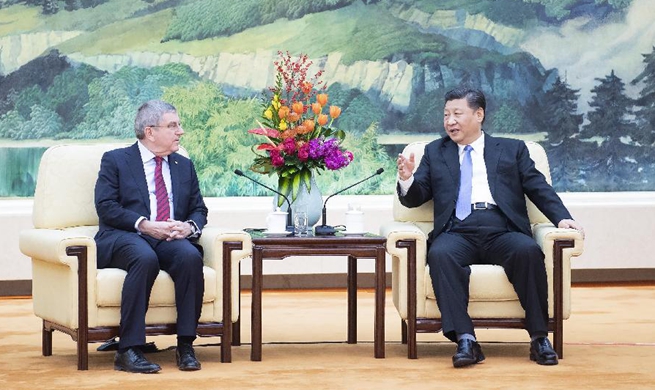BEIJING, Jan. 31 (Xinhua) -- As the first snapshot of China's economic activity in 2019, the closely-watched purchasing managers' index (PMI) unveiled Thursday offered fresh signs of stabilization.
PMI for the manufacturing sector came in at 49.5 this month, slightly up from 49.4 in December, the National Bureau of Statistics (NBS) said.
A reading above 50 indicates expansion, while a reading below reflects contraction.
Although the figure stayed below the boom-bust line for a second month, the slight increase in the reading ended a consecutive four-month decline, NBS senior statistician Zhao Qinghe said in a statement.
The manufacturing sector experienced faster expansion, with the sub-index up slightly by 0.1 points, Zhao said.
Despite a mild decline in the reading for new orders, the sub-index for new export orders rebounded by 0.3 points from December, showing moderate recovery in external demand, he added.
The sub-indices for raw material inventories, raw material purchase prices and factory-gate prices nudged higher from December, while those for new orders, employment and supplier delivery time dropped.
Large companies saw the manufacturing PMI up 1.2 points to 51.3, whereas the readings for small- and medium-sized companies dropped 1.3 and 1.2 points, respectively.
Meanwhile, large companies were more upbeat about growth prospects than smaller firms, Zhao said.
Zhao also sees the growing prowess of new sources of growth, as the sub-reading for production of the high-tech manufacturing sector rose 3.2 points from December to 51.6.
Zhang Liqun, a researcher with the Development Research Center of the State Council, said the new data pointed to signs of the country's economic stabilization, but the foundation still needs to be further consolidated.
"Headline PMI edged up largely due to temporary re-stocking in the raw materials industries, helped by lower inventory levels at the start of the year," investment banking firm CICC said in a research note.
However, the data indicated that aggregate demand growth continued to be sluggish, while consumer and producer confidence remains weak for now, the note reads.
Looking forward, the CICC said it would closely watch for changes in leading indicators such as credit cycle and monitor sectors vulnerable to demand-supply imbalances, especially the property sector, as well as the evolution of household income and consumption.
This month, the non-manufacturing PMI rose 0.9 points from December to 54.7, higher than the monthly average of 54.4 in 2018.
The service sector, which accounted for more than half of the country's GDP, posted stronger expansion with its business index climbing to 53.6 from 52.3 in December.
Boosted by pre-holiday factors and consumption upgrades, wholesale, rail transportation, aviation, delivery, telecom, banking, insurance, tourism and other commercial services posted robust expansion, Zhao said.
The composite PMI output index, which took into consideration both manufacturing and non-manufacturing sectors, rose 0.6 points to 53.2, the NBS said.
The data came as some relief after China posted slower GDP growth, which was 6.6 percent in 2018, above the government's annual target of around 6.5 percent but slightly down from the revised growth of 6.8 percent for 2017.

















